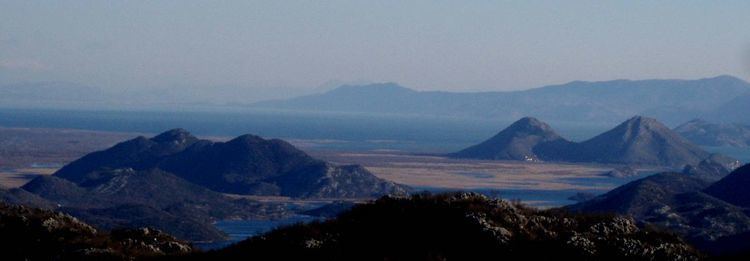 | ||
Ceklin (Serbian Cyrillic: Цеклин; [tsɛ̌kliːn]) or Ceklinjani (Цеклињани) is a historical tribe and region of Old Montenegro.
Contents
Territory
The tribe seat is at the village of Ceklin, which comprises thirteen clans. Other villages in the tribal region are: Strugari, Ulici, Bokovo, Jankovići, Đalci, Drušići, Rvaši, Zagora, Bobija, Vranjina, Dujeva (with smaller villages/subsections: Mihaljevići, Trnovi Do and Riječani), town of Žabljak Crnojevića (with many brotherhoods) and at the end of the territory known as Riječka Okolina and Varošica Rijeka in which there are other tribes present.
Name
During the reign of the Crnojević family in Zeta, old Ceklin was named Donje Dobro, while neighbouring Gornje Dobro later received the name Dobrsko Selo. These names are attested in Ottoman defters from the beginning of the 16th century and in Mariano Bolizza's 1614 work. At the time of Ivan Crnojević, Ceklin was only the name of a settlement. A. Jovićević derives Ceklin from Tekla, from St. Thecla, to whom a church is dedicated to, according to folklore by the native Mihaljevići in the 15th century. In the charters of Ivan Crnojević from 1485 and 1489, the village of Ceklin is named Cvetlin (Цвѣтлин) and Cetlin (Цѣтлин), which are the first mentions of the village with this name. The 1489 charters mentions the "nobility of Cetlin", Radič Rašković, Radelja Mirujević, Sćepan Nikolić and Vuk Piperović.
In the Ottoman defters of 1521 and 1523, Ceklin (Cjetlin) and Donje Dobro are mentioned parallelly, and according to order, Donje Dobro was used for Donji Ceklin (Mihaljeviće and Strugare).
History
The "old" or "real" Ceklinjani (стари, прави Цеклињани) inhabited the original Ceklin, a small area beneath the Ceklinštak mountain, divided into Gornji kraj (Upper area) and Donji kraj (Lower area). All older clans of the tribe were formed in this area. The tribe expanded its borders in the 17th century, pushing the Bjelice tribe out from what is now Ceklin. They further expanded in the 18th and 19th centuries. The "old" Ceklinjani (Gornjaci and Donjaci) did not allow the immigrant families in Ceklin to take part in the settlement of conquered territory.
Organization
The vojvodas and serdars of the tribe were up to mid-19th century members of the Đurašković clan. During the reign of Prince Danilo, the title of vojvoda was passed to the Strugari clan, and the title of serdar to the Jovićević clan.
It once belonged to the Riječka nahija ("River district").
Anthropology
The "old" or "real" Ceklinjani (стари, прави Цеклињани) inhabited the original Ceklin, a small area beneath the Ceklinštak mountain, divided into Gornjak or Gornji kraj (Upper area) and Donjak or Donji kraj (Lower area). All older clans of the tribe were formed in this Old Ceklin (Stari Ceklin). The tribe expanded its borders in the 18th and 19th centuries.
The Gornjaci clans, according to their folklore, trace their origin to Leka, who migrated from Klimenti (in northern Albania) to first Piperi and then Ceklin in ca. 1485. Leka had married the widow of chieftain Radivoj Liješević in Piperi, with whom he had a son, Krstić. The widow's son from her first marriage, Vukosav, was adopted by Leka and given part of Ceklin. According to Donjaci folklore, Liješ was a Drobnjak-Novljanin that settled Piperi in ca. 1385. The Gornjaci clans originate from two brothers that lived in the 17th century, Lješ and Vulič, and were descendants of Krstić. The Donjaci clans originate from two of Vukosav's sons, Bajo and Grujica.
Clans
Families
There are many families in other tribes that emigrated from Ceklin.
